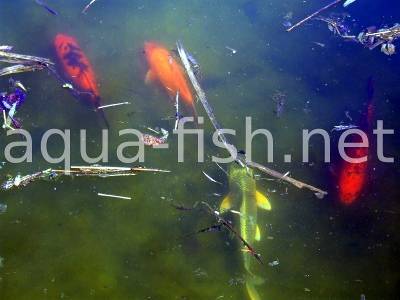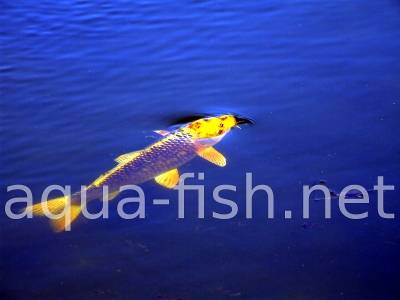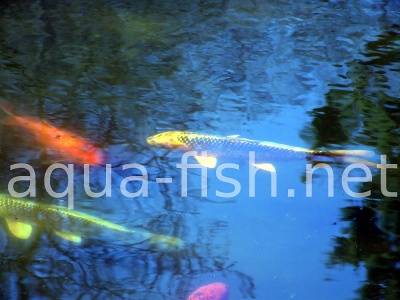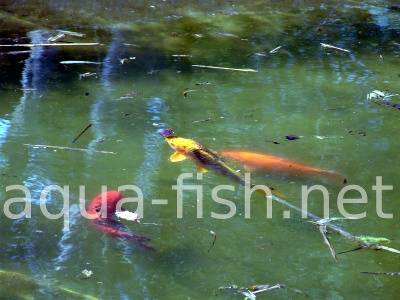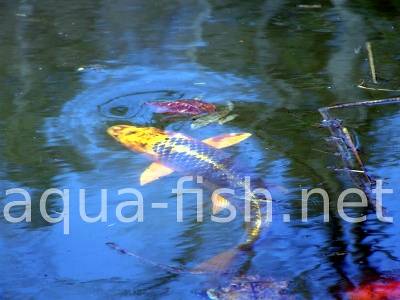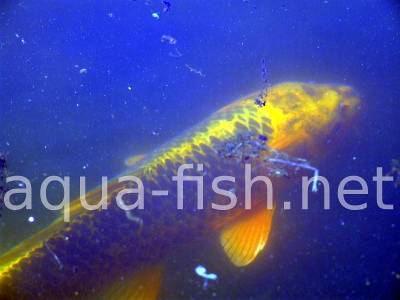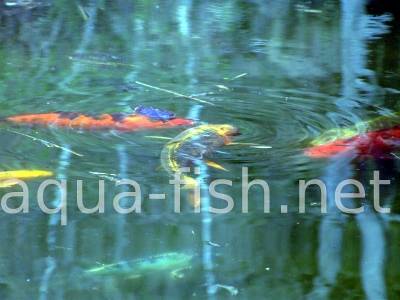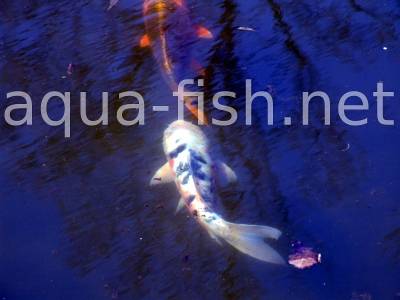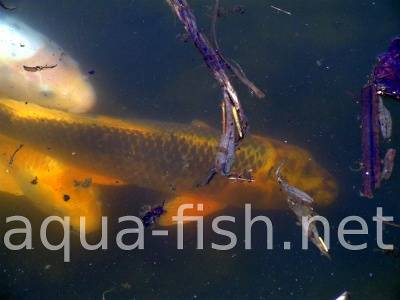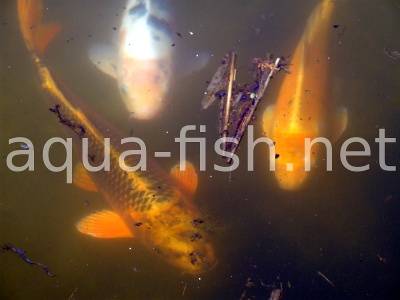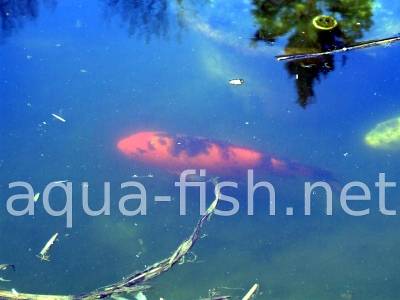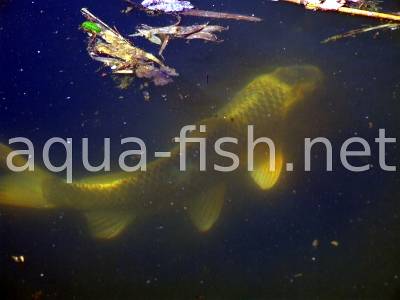Comprehensive Guide to Koi Carp Care, Types, and Breeding Tips
Quick Links - Answers
Brief Description
This article provides a comprehensive guide to Koi Carp care, covering topics like different Koi types, seasonal care tips, feeding and nutrition, pond maintenance, health concerns, and breeding. Explore various aspects of keeping Koi, including the optimal pond environment, diet, and breeding techniques. Visit our Koi Carp profile for additional tips and to join discussions with fellow Koi enthusiasts.
Types of Koi
Koi carp is an ornamental variant of the common carp (Cyprinus carpio), originating from Asia, mainly China and Japan. Koi are renowned for their vibrant colors and graceful swimming patterns. They can reach up to 30 inches (75 cm) in length and can live for several decades if properly cared for. Japanese breeders have cultivated various color varieties over the years. The most common types include:
Kohaku
White Koi with red spots. The colors should be uniform without shading, with red spots covering about half of the body. Kohaku are one of the most popular and iconic Koi varieties.
Sanke
White Koi with red and black spots. The head should only have red spots, similar to Kohaku. The presence of black spots distinguishes Sanke from other varieties.
Shusui
Blue-grey Koi with dark blue shading along the lateral and dorsal lines, and red coloring on the sides, fins, and tail. This variety is known for its unique scaleless appearance along the back.
Asagi
Blue-grey Koi with red-orange shading on the sides, fins, and tail. The intricate blue netting pattern on the body gives Asagi a striking appearance.
Showa
Three-colored Koi resembling Sanke, but with more extensive black patterns, including on the head. The balance of black, red, and white colors is crucial for a Showa's beauty.
Bekko
Koi with black spots over a white, red, or yellow body. Types include Shiro Bekko (white body), Ki Bekko (yellow body), and Aka Bekko (red body). The black markings are more dispersed compared to Utsurimono.
Utsurimono
Black Koi with red, yellow, or white spots. Unlike Bekko, the black covers most of the body. Types include Ki Utsuri (black with yellow), Hi Utsuri (black with red), and Shiro Utsuri (black with white). Utsurimono are known for their dramatic and contrasting patterns.
Other lesser-known varieties include Karasugoi (black with orange belly), Kigoi (yellow body), Benigoi (totally red body), Chagoi (light brown body), Shiro Muji (totally white body), and Soragoi (blue-grey body). These types are not only valued for their unique colors but also for their personality and friendliness, especially Chagoi, which is known to be more interactive with keepers.
Aquarium and Pond
An aquarium is only suitable for Koi when they are small (up to 6-9 inches or 15-20 cm). Koi can grow up to 30 inches (75 cm) or more, and they thrive in a pond environment where they have ample space to swim. A properly sized pond should be at least 1,000 gallons (approx. 3,785 liters) to accommodate their growth and ensure a healthy habitat.
When setting up a pond, consider incorporating a variety of features such as plants, rocks, and gravel to create a natural ecosystem. Koi thrive in temperatures ranging from 34°F to 68°F (1°C to 20°C). To prevent total icing in winter, ensure your pond is deep enough (at least 3 feet) to provide an area of stable temperature. In summer, provide shade to avoid overheating. Regular pond maintenance is crucial, including using a high-capacity filter, aeration, and performing water changes to maintain optimal water quality.
Feeding and Nutrition
Koi are omnivores requiring both protein and carbohydrates. A varied diet is essential for their health, growth, and vibrant coloration. During summer, feed them 2-3 times daily, reducing the frequency to once daily during cooler seasons. A high-quality Koi pellet can serve as the diet base, supplemented with insects, mealworms, earthworms, and small pieces of freshwater fish to mimic their natural feeding habits.
Koi also enjoy fruits and vegetables like lemons, oranges, apples, carrots, spinach, and peas. These can be cut into small pieces to prevent choking. Choose food enriched with vitamin C to boost their immune system and promote overall health. Avoid feeding Koi food intended for other fish species, as it may lack the specific nutrients Koi require.
In colder months, switch to a wheat germ-based food, which is easier for Koi to digest when their metabolism slows down. Avoid overfeeding, as uneaten food can pollute the water and lead to health problems.
Seasonal Care for Koi Ponds
Spring
Spring can be a challenging time for Koi due to fluctuating temperatures. Gradually introduce feeding as water temperatures stay above 50°F (10°C). Observe Koi for signs of stress or illness and adjust care accordingly. Perform partial water changes to remove debris accumulated during winter and promote water quality.
Summer
Summer is the optimal growth season for Koi. Their metabolism and immune system are most active, so provide more food but avoid overfeeding. High temperatures can reduce oxygen levels, so using aerators or fountains will help oxygenate the water. Monitor water quality regularly to ensure it remains within suitable parameters for Koi health.
Fall
Start reducing food intake in the fall to prepare Koi for the slower metabolism of winter. Clean the pond by removing fallen leaves, dead plants, and debris. Consider installing a pond net to prevent additional debris from entering the water. As temperatures drop, Koi require less food; switch to easily digestible wheat germ-based foods.
Winter
Koi can survive in cold water, but in extremely cold climates, it's wise to have a winter tank or a deeper pond. Maintain water temperatures above freezing and use pond heaters or de-icers to prevent complete ice cover. When water temperatures fall below 50°F (10°C), stop feeding Koi, as their metabolism slows and they cannot digest food efficiently.
Health and Disease
Maintaining optimal water quality and a varied diet are essential to prevent common Koi diseases. Some common health issues include:
- Ich: White spots on the body caused by a parasite. Treat with a proper medication and increase water temperature gradually.
- Fin Rot: Usually a result of poor water conditions. Ensure water quality is high and use an antibacterial treatment if needed.
- Swim Bladder Disorder: Caused by overfeeding or poor diet. Fast the Koi for a day and introduce peas to their diet to aid digestion.
Regular observation and water testing are key to catching issues early and maintaining a healthy Koi population.
Breeding and Sexing Koi
Koi reach sexual maturity at about two years of age. Males are generally smaller with sharper fins, while females are larger and rounder due to carrying eggs. During the breeding season, males develop small white nodules (called breeding tubercles) on their gill covers and pectoral fins.
Koi usually spawn in early summer when water temperatures are around 68°F (20°C). In a community pond, Koi may lay eggs among plants or on the pond floor. To encourage breeding in a controlled environment, use a breeding tank equipped with fine-leaved plants or spawning mats. After spawning, it's advisable to remove the eggs to a separate tank to prevent adult Koi from eating them.
Questions and Answers
-
When do Koi fry start to show their colors?
Answer: Koi fry usually start showing colors at about 6 months old. This time can change based on the type of Koi and the individual fish.
-
Where do Koi lay their eggs?
Answer: Koi lay their eggs on plants or at the bottom of the pond. They usually start breeding when they are 8-12 inches (20-30 cm) long.
-
What fish can live easily with Koi?
Answer: Goldfish can live with Koi since they like similar water temperatures. Other coldwater fish can also live with Koi if they get used to the pond's conditions. Avoid fish that are too aggressive, as they can stress the Koi.
Copyright note: This article was originally written by Michela Ferretti. Aqua-fish.net holds the full copyright to this article.





